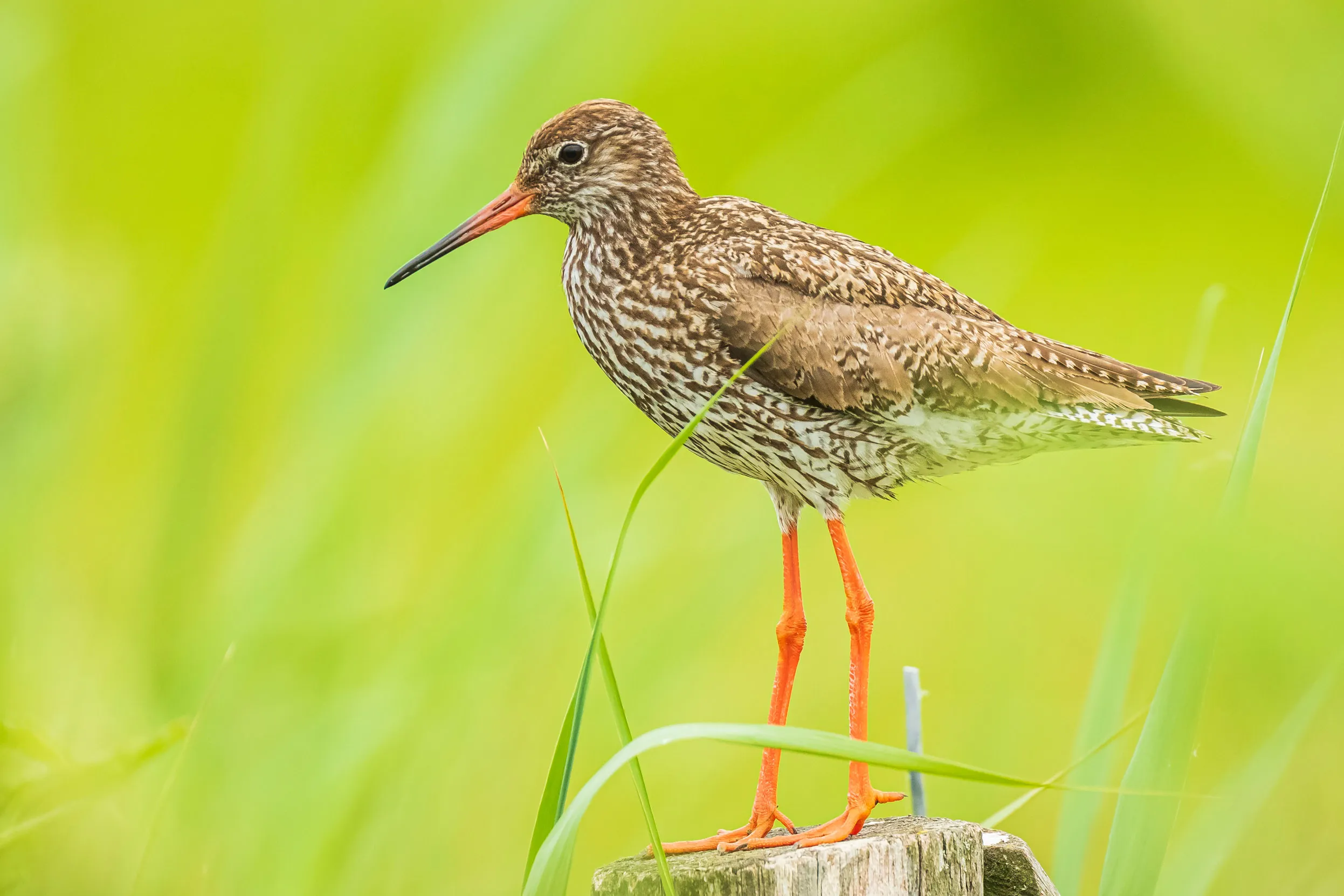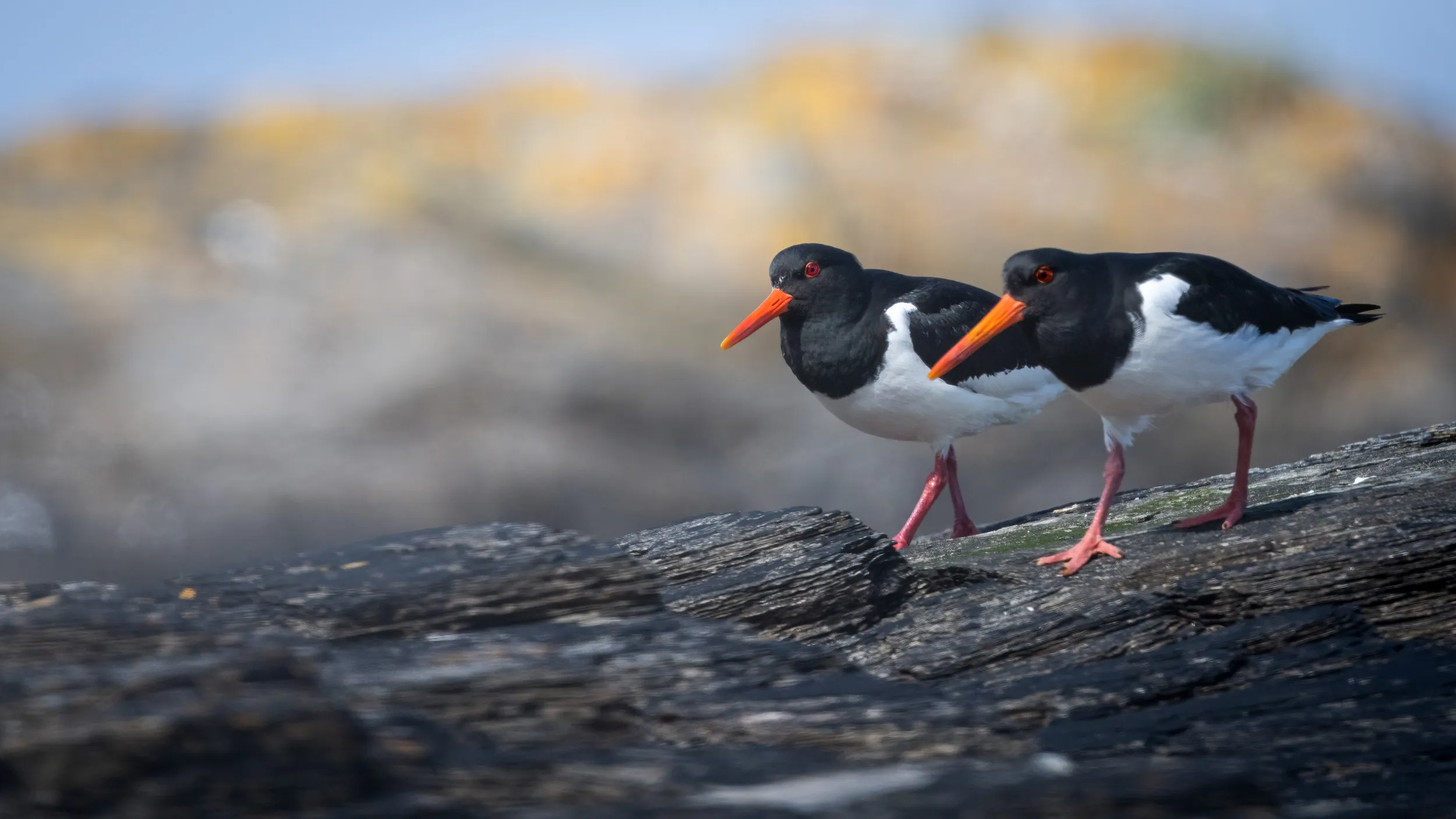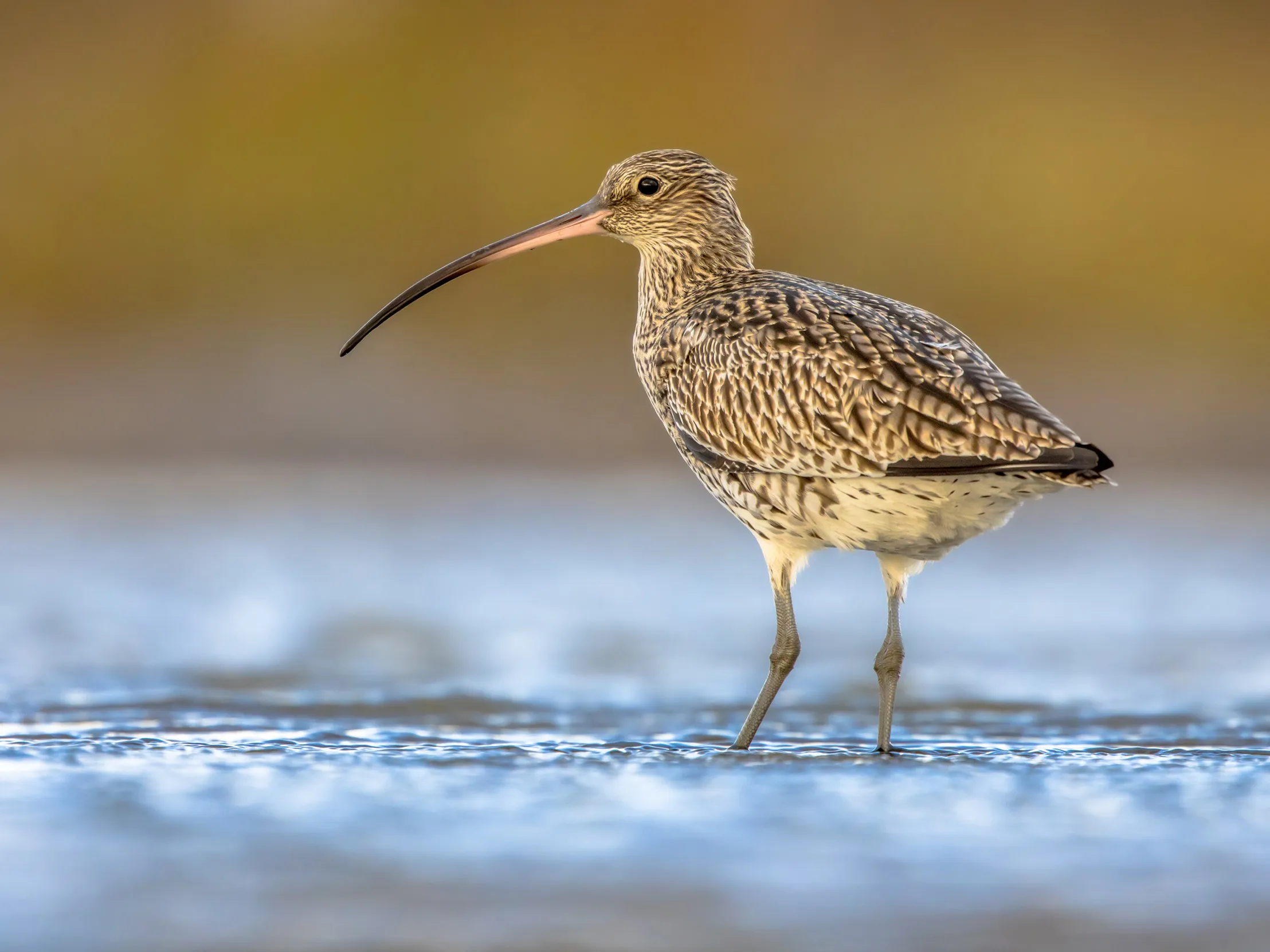LIFE on the Edge
LIFE on the Edge is a 4-year LIFE Nature project lead by the RSPB with the National Trust to improve the condition of the target coastal sites while also building their long-term resilience and informing future work elsewhere.

On this page
The UK has lost more than 15% of its intertidal habitat since 1945, including 8,000 ha of saltmarsh and even more mudflat (Office of National Statistics 2016). In addition, it has lost 46% of its shingle and 18% of its dunes.
Looking forward, RSPB research predicts that the UK will lose at least a further 60 ha of protected intertidal habitats per year to sea-level rise and accelerated erosion, plus additional areas outside designated sites. In a natural setting, such habitats could retreat inland; however, much of the UK coastline is backed by fixed sea walls (ca. 72% in England) and is therefore subject to ‘coastal squeeze’.
The RSPB Sustainable Shores report (2018) highlights the past losses, poor quality of remaining, and predicted future losses of coastal habitat and recommends a programme of habitat management/creation to address this. The report highlights where losses will be greatest, and where the best opportunities occur to address these problems. This project builds on these recommendations and will bring significant benefits to seven coastal Special Protected Areas (SPAs) building their long-term resilience within the project period, and we will use these as platforms from which to advocate for a wider scale and longer-term programme of habitat creation. This project focuses on England but will be of major demonstration value throughout the UK and NW Europe.
The key breeding species targeted will be:
- Little Tern, Sternula albifrons
- Redshank, Tringa totanus,
- Sandwich Tern, Thalassius sandvicensis
- Common Tern, Sterna hirundo
- Avocet, Recurvirostra avosetta
- Lesser Black-backed Gull, L. fuscus
- Mediterranean Gull, L. melanocephalus.
- Herring Gull, Larus argentatus
- Ringed Plover Charadrius hiaticula
- Oystercatcher, Haematopus ostralegus
- Dunlin, Calidris alpina alpina
- Curlew, Numenius arguata
- Turnstone, Arenaria interpres
- Grey Plover, Pluvialis squatarola
- Bar Tailed Godwit, Limosa Lapponica
- Brent Goose, Branta bernicla bernicla
Objectives
The low-lying coastlines support globally important numbers of breeding, migrating and wintering waterbirds. These birds and their habitats are protected within an extensive network of protected areas but are nevertheless under great and growing pressure. This is due partly to natural erosion and deposition, partly to climate change-induced sea-level rise, and partly to developmental and recreational impacts.
- Increase the area and improve the quality of coastal habitats within the target protected areas.
- Develop recommendations for wider scale and longer-term coastal habitat management/creation.
- Strengthen links with practitioners elsewhere in north-west Europe.

Key Activities
The main focus of the project will be on the creation and restoration of habitat within the target Special Protected Areas (SPAs) to benefit birds for which these sites are designated.

Objective 1
Hodbarrow RSPB (Morecambe & Dudden Estuaries SPA): Creation of a 0.5-ha new island at RSPB Hodbarrow to provide new nesting habitat for sandwich, common and little terns. This was completed in January 2021.
South Walney (Morecambe & Dudden Estuaries SPA): partnership project with NE and CWT to reduce predation impacts on large gull and other seabird colonies through effective predator fencing. This will be undertaken in April 2021.
Old Hall Marshes RSPB (Blackwater Estuary SPA): improvement to the condition of 180 ha of grazing marsh for wintering waterfowl and breeding Redshank, Ringed Plover and Avocet. Also, habitat restoration for little terns. Phase 1 will be started in the August- December 2021, Phase 2 in 2022 and completed in 2023 (Phase 3).
Northey Island NT (Blackwater Estuary SPA): a flagship coastal restoration project - replacing 30 ha of intertidal habitat threatened by erosion and sea-level rise, for the benefit of wintering and migrating waterfowl and breeding Redshank and Ringed Plover. This work will include the creation of 10 ha of new saltmarsh through managed realignment. This will be undertaken in 2021-2023.
Titchwell RSPB (North Norfolk Coast SPA): Hydrological management to improve the condition of 29 ha of freshwater marsh and reedbed, plus creation of 12 new islands to benefit a range of breeding and wintering birds. This will be completed in 2021.
Minsmere RSPB (Minsmere/Walberswick SPA): Enhancement of a 20.5-ha saline lagoon/scrape plus restoration of nesting islands for terns and avocet. This work is planned for 2021-2023.
Langstone Harbour RSPB (Chichester & Langstone Harbours SPA): Restoration of a 1.5-ha island in Langstone Harbour and re-profiling of several islands (covering 0.2 ha) at Hayling Oysterbeds. These activities will provide new and safer nesting habitats for little, common and sandwich terns, and will also benefit a variety of roosting shorebirds. This will be undertaken in August-December 2021.
Seasalter RSPB (The Swale SPA): Hydrological management of 16 ha of grazing marsh to benefit wintering and migrating birds and breeding Redshank. This will be undertaken in August-December 2021.
Horsey Island RSPB (Hamford Water SPA): a flagship partnership project with Harwich Haven Authority using dredged material to restore eroding shingle bank which hosts the most important little tern colony in Essex and provides protection for important grazing marsh with breeding waders. This will be undertaken in 2022.
Reducing disturbance through partnership work: Throughout the project, we will also be working directly with local communities and visitors in Morecambe Bay and Solent and Southampton to protect and raise awareness of the beach nesting birds. This work includes engaging local volunteers to find nests, protect them during the breeding season and engage with site visitors. We will also invest in interpretation boards, equipment and skill development of the volunteers.
Objective 2
We will work with statutory agencies, other NGOs and academics to define needs and opportunities and develop specific recommendations, flagship beneficial use projects, and species-specific opportunities. These will be a key legacy of the project, informing coastal management at the regional level in the post-project period.
.jpg)
Objective 3
We will share knowledge and ideas with colleagues in other north-west European countries facing similar problems – e.g. France, Belgium, the Netherlands, Germany and Denmark. Key themes likely to include the design of habitat creation projects, best practice in predator management, species recovery projects for terns and waders. There are close links between our project and several current European LIFE projects, and we plan to liaise closely with these and build on legacies of recent UK LIFE projects.
Results
The main direct result of the project will be more, and better coastal habitat in place within the target SPAs to benefit breeding, wintering and migratory waterbirds.
Specifically:
- 2.5 ha of new island habitat will have been created
- 31.5 ha saline lagoon will have been enhanced
- 30 ha of intertidal habitat will have been saved or replaced with new habitat
- The condition of 261 ha of freshwater and grazing marsh will have been improved
- 1.5 ha shingle and grassland will have been restored, and 4 ha of shingle will have been recharged
- 10 ha of nesting habitat will have been made safe using fencing
- Disturbance will have been reduced along key areas of SPA coastline through awareness work, creating conditions for at least two new bird breeding colonies
- These improvements will lead to increases in the population and/or productivity of target breeding species and will also benefit migrating and wintering species.
- Recommendations will be produced for longer-term, landscape-scale coastal management in the project areas. This will include some site-specific assessment of opportunities, and the development of plans to inform and facilitate future coastal habitat projects
- Best practice and case studies will be produced on issues such as island creation and predator management

Partners
- RSPB
- National Trust
Funding
LIFE on the Edge is financed by the EU LIFE Nature and Biodiversity fund.
It is 60% funded by the EU LIFE Programme and 40% from contributions by the partners and stakeholders. This includes Natural England, Harwich Haven Authority, Environment Agency, BirdAware Solent

More information
More information is available on our project website and on our social media channels X (Twitter) and Facebook.
If you have any questions please contact the project team through LoTE@rspb.org.uk
















